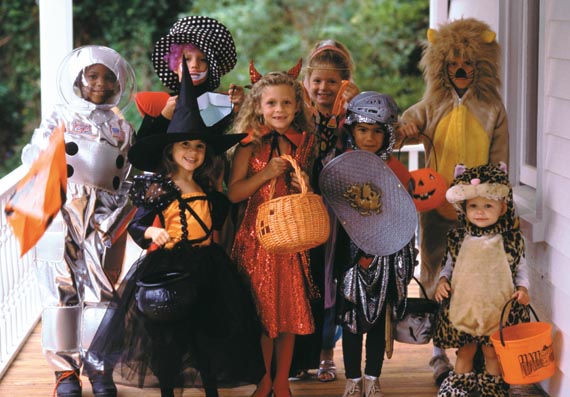-
Tricks, Treats & Halloween Safety
Whether children are old enough to go out for Halloween trick-or-treating on their own or you're going with them, Dr. Joseph Behn, M.D., a family practice physician at Mayo Clinic Health System in Onalaska, Wis., recommends reviewing safety tips with them:
- Food poisoning is always a concern when it comes to Halloween treats. Don’t leave perishable goodies out of the fridge for more than two hours (one hour in temperatures above 90°F). Cold temperatures help keep most harmful bacteria from multiplying. Food poisoning symptoms vary with the source of contamination.
- Children with diabetes can eat candy, but the carbohydrates the treats contain should be factored into the child’s meal plan for that day and the child’s insulin level adjusted accordingly.
Dr. Behn also recommends parents inspect candy before allowing children to eat it, Have children wear reflective strips on clothing, stick to familiar neighborhoods, set rules about where children will go, when they'll return and to carry a cell phone in case of emergency.
To interview Dr. Behn contact:
Rick Thiesse
Mayo Clinic Health System
608-392-9435 or thiesse.ricky@mayo.edu
More saftey tips:
- Read candy and food labels carefully. On Halloween, children with allergies to foods need to be extra careful. Consuming items that contain nuts or peanuts may result in a trip to the emergency room. Other common sources of food allergies in kids include milk, eggs, fish, shellfish, soy and wheat. Ask your doctor for a prescription for an epinephrine pen — used in emergency situations to treat food allergy reactions — so you’re ready if your child consumes something he or she shouldn’t.
- Children with asthma should avoid entering people’s homes when trick-or-treating because the presence of pets or smokers can cause an asthma attack. Kids should keep a rescue inhaler in their pocket or trick-or-treat bag in case they experience trouble breathing.
- Look for the warning label to avoid juice that hasn’t been pasteurized or otherwise processed, especially packaged juice products that may have been made on site. When in doubt, ask! Always ask if you are unsure if a juice product is pasteurized or not. Normally, the juice found in your grocer’s frozen food case, refrigerated section, or on the shelf in boxes, bottles, or cans is pasteurized.
- Ration the collected candy to avoid cavitities and the “pig out” stomachache. To help prevent children from snacking on treats, give them a light meal or healthy snack before they head out.








